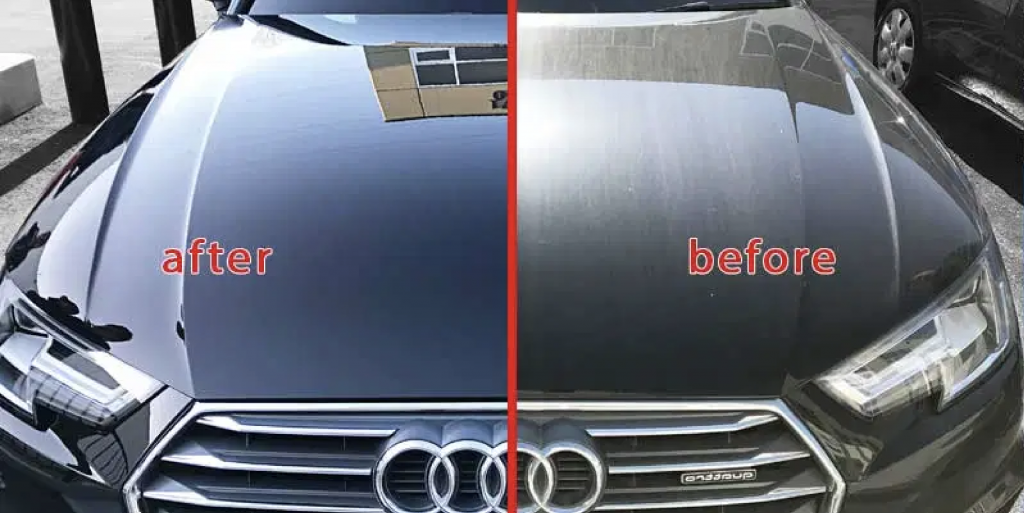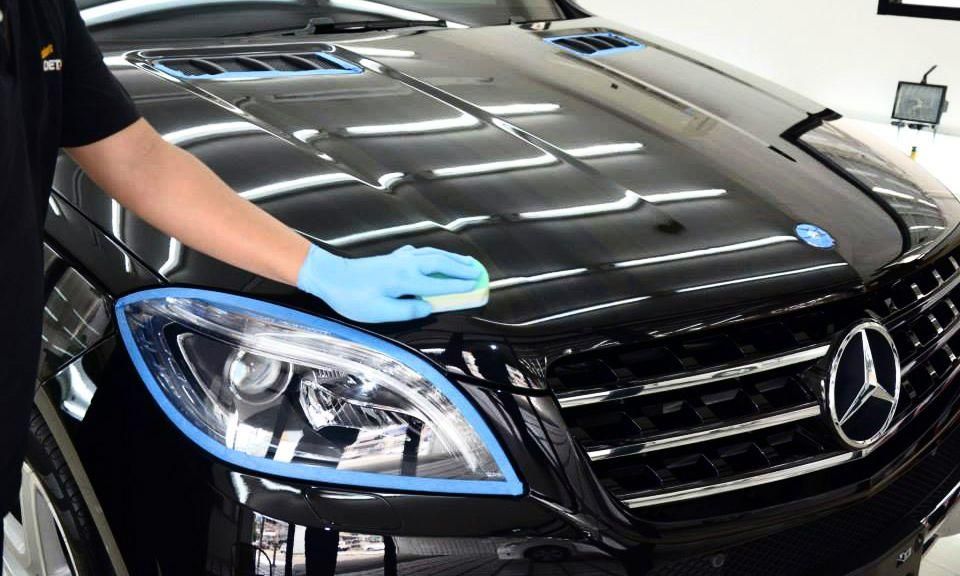Exactly How Ceramic Covering Protects Your Car's Paint and Keeps It Looking New
Ceramic coating has become a famous remedy for auto paint security, providing a durable protection versus a range of ecological risks. By developing a semi-permanent bond with the vehicle's surface area, it effectively seals microscopic imperfections and offers a shield versus oxidation, dust, and UV damages. This not only preserves the aesthetic appeal of the auto but likewise streamlines maintenance regimens. Yet, the ins and outs of exactly how this modern technology works and its benefits over standard methods warrant a closer evaluation, revealing compelling reasons to consider this ingenious technique for your lorry.
What Is Ceramic Covering?
Ceramic finishing is regularly considered a cutting edge improvement in auto paint protection. ceramic coating. This advanced product is a liquid polymer that chemically bonds with the automobile's factory paint, forming a protective layer that enhances resilience and visual charm. Unlike conventional wax or sealants, which supply only short-term protection, ceramic finishings use resilient results, frequently spanning several years with proper upkeep
The key components of ceramic finishes are silicon dioxide (SiO2) and titanium dioxide (TiO2), which contribute to their hydrophobic properties. This hydrophobic nature enables water to bead and roll off the surface, successfully preventing impurities like dust, gunk, and bird droppings from adhering to the paint. Lorries treated with ceramic coatings call for less constant cleaning and are less complicated to preserve.
Additionally, ceramic coverings give UV security, which helps avoid oxidation and fading of the paint due to sunlight exposure. This aspect not just preserves the cars and truck's aesthetic appeal but likewise adds to its resale value gradually. On the whole, ceramic finishes represent a substantial leap forward in the realm of auto care, using a durable solution for lorry proprietors seeking to preserve their investment.
Just How Ceramic Layer Works
Ceramic layer consists of a fluid polymer that chemically bonds with the factory paint of a vehicle (ceramic coating). The main part of ceramic finishes is silica dioxide (SiO ₂), which supplies premium solidity and resilience against scrapes, UV rays, and various other outside contaminants.
When used properly, the finish penetrates the tiny pores of the paint surface, creating a semi-permanent bond. This leads to a smooth, shiny finish that improves the vehicle's visual allure while simultaneously pushing back water, dirt, and crud. The hydrophobic nature of the finishing ensures that contaminants glide off easily, lowering the regularity of cleaning and the chance of scrapes throughout cleansing.

Benefits of Ceramic Layer
The application of ceramic coating supplies numerous benefits that considerably enhance the protection and look of a lorry's paint. One of the main benefits is its capacity to create a robust, hydrophobic layer that drives away water, dust, and other impurities. This home not only maintains the surface cleaner for longer durations but additionally makes cleaning the car easier and much less labor-intensive.
Additionally, ceramic coatings provide remarkable defense against hazardous UV rays, which can lead to oxidation and fading over time. ceramic coating. This UV resistance helps keep the original shade and gloss of the vehicle's paint, therefore maintaining its visual charm for years
In addition, ceramic layers are chemically immune, using protection versus acidic impurities such as bird droppings, tree sap, and road crud. This resistance assists stop etching and discoloration, which can endanger the honesty of the paint.
Lastly, the longevity of ceramic finishes prolongs beyond conventional waxes and sealants, frequently enduring several years with appropriate maintenance. This long-lasting defense ultimately translates right into expense financial savings, as car owners can reduce the frequency of reapplication and upkeep efforts. Overall, ceramic layers stand for a considerable investment in automobile treatment.
Contrasting Ceramic Coating to Conventional Techniques
Commonly ignored in the quest for optimum automobile protection, the contrast between ceramic finishing and traditional methods such as waxing and sealants exposes substantial distinctions in toughness, performance, and maintenance. Typical waxes commonly provide a brief protective layer, often lasting just a few weeks to a pair of months, while sealers can extend this period to several months. On the other hand, ceramic finishings offer a robust, resilient guard that can endure for find this several years when appropriately used.
In regards to efficiency, ceramic layers display exceptional hydrophobic properties, efficiently driving away water and contaminants, which prevents dirt and crud from adhering to the surface area. This residential or commercial property not only boosts the automobile's appearance however likewise streamlines the cleansing procedure. Standard waxes and sealers, while they may use some water resistance, do not match the level of protection supplied by ceramic coverings.
The upkeep regimen for both options diverges considerably. While traditional techniques need regular reapplication and maintenance, ceramic finishings are created to stand up to the roughness of daily driving with very little treatment, making them a much more efficient option for car fanatics seeking long-lasting defense. Ultimately, the choice in like this between ceramic finishing and conventional approaches depends upon the preferred level of protection and maintenance commitment.
Maintenance Tips for Ceramic Coated Cars
Preserving a ceramic covered vehicle needs a critical method to guarantee the long life of the protective layer. Most importantly, routine cleaning is crucial. Use a pH-neutral hair shampoo and microfiber clean gloves to avoid damaging the coating while properly eliminating dirt and contaminants. Aim to clean your automobile every 2 weeks, or extra often in extreme problems.
In addition, prevent automated auto cleans that make use of brushes, as these can endanger the honesty of the ceramic coating. Rather, choose for a touchless clean or a hand wash. After cleaning, drying out is vital; utilize a premium microfiber towel to protect against water places.
Applying a ceramic-specific upkeep spray can boost the coating's hydrophobic homes and add an added layer of security. This should be done occasionally, depending upon your driving problems.

Final Thought
In final thought, ceramic layer acts as a reliable protective step for auto paint, using a resilient obstacle against environmental damage and boosting the lorry's visual allure. Its special sites homes, including hydrophobicity and UV defense, contribute to durable sparkle and cleanliness. Compared to traditional approaches, ceramic coatings present remarkable performance and longevity, eventually minimizing upkeep efforts. Embracing ceramic finish modern technology can significantly extend the lifespan of a car's exterior, ensuring it remains aesthetically attractive and well-protected.